6th Generation Gems
Top 10 Overlooked Games from the 6th Generation of Video Games!
The 6th generation of video games was an interesting one. The PlayStation 2 dominated the sales charts, but the generation also saw Sega’s last console, Microsoft’s first console, and Nintendo’s first foray into disc-based consoles. Arcades were on life support during this era, but PC gaming was ramping up and handheld gaming was as popular as ever. This list aims to highlight games that didn’t receive the recognition or sales they deserved upon their release. As usual, I’ve elected not to include licensed games, sequels, or games that were successful enough to get sequels of their own. If a game has already been recognized on this site as one of the Top 10 games for its respective system, I’ll also refrain from mentioning it here.
10
Jade Empire
Multiplatform (2005)
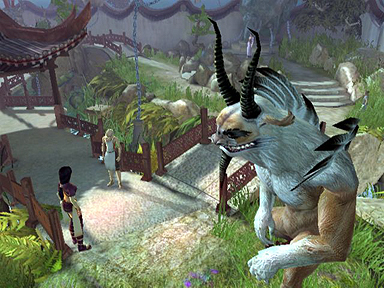
Jade Empire is a forward-thinking action RPG from Bioware that was known for its impressive cinematic qualities and high production values. The landscapes are breathtaking, the music is perfectly suited to the game’s East Asian themes, and the voice acting is phenomenal. The captivating story is supported by an innovative and accessible real-time battle system. One of the most interesting parts about Jade Empire is its morality system that allows players to choose between two conflicting philosophies. In essence, players can either choose to take on a heroic role during the game or adopt a more selfish attitude. The path a player takes can have profound affects on the story, so Jade Empire inherently has higher replay value than typical RPGs do. The camera doesn’t always co-operate and the story can be pretty predictable at times, but the entertaining battle system and intriguing setting will make Jade Empire a worthwhile experience for any RPG fan. The game got great reviews across the board, but it never seemed to catch on like other Bioware RPGs like Knights of the Old Republic or Mass Effect. The game was released over a decade ago, and it seems unlikely that we’ll see a sequel at this point.
9
Killer7
Multiplatform (2005)
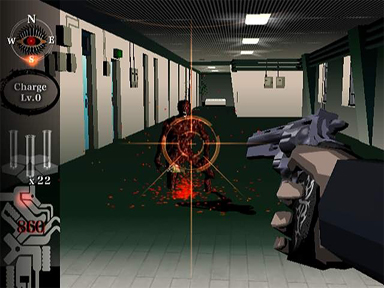
A stylish action/adventure game from Grasshopper Manufacture, Killer7 is defined by its cel-shaded graphics, creative storyline, and unconventional gameplay. The game looks like a typical first-person shooter, but the players movement is restricted and they are guided through the levels on invisible rails. The game isn’t as linear as it sounds. Players have the option to move forward or backwards through the levels, and progress is made by solving environmental puzzles. The events of killer7 take place in an alternate future where world peace has been achieved. When a terrorist organization emerges, the entire world becomes crippled with fear. Having no other options, the “powers that be” seek help from an elderly, wheelchair-bound man named Harman Smith who has the apparent ability to call on seven distinct split personalities to assist him. Harman and his multiple personalities form an elite group of assassins that is collectively known as the Killer7. These personalities include a knife-throwing albino, a blind teenager, a latino thief, a former lucha libre wrestler, a resident badass, and a woman. Each character is useful in their own way, and gamers will need to use each personality in order to progress. Killer7 has achieved cult status, but it’s an example of a game that was never going to catch on with mainstream audiences. The depictions of sex and violence were considered inappropriate by some reviewers, and a lot of gamers simply couldn’t wrap their heads around a game that looked like a first-person shooter but didn’t necessarily play like one. The story, characters, gameplay, and visuals were completely non-formulaic, so Killer7 is a perfect game for people looking for something a little different.
8
Cubivore
Nintendo GameCube (2002)
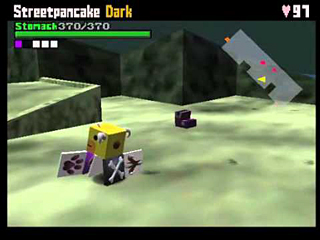
Cubivore: Survival of the Fittest is a bizarre action/adventure game co-developed by Saru Brunei and Intelligent Systems. Nintendo released the game in Japan, but Atlus stepped in to publish the game in America. The game received mixed reviews, it sold poorly, and Nintendo themselves had no faith in the game. It’s not surprising that it was overlooked by so many gamers. Cubivore was originally slated to be released for the ill-fated Nintendo 64DD, and this was evident in the final product. The simplistic graphics were already outdated by the time was released, but the bizarre gameplay in Cubivore has held up surprisingly well. In the game, players control a cube-shaped animal called a Cubivore and are tasked with eating other animals in order to mutate and become stronger. The eventual goal is to make it to the very top of the food chain. The combat in the game is simple and fast-paced, but a lot of strategy is often required. The objective in each battle is to attack, weaken, and eventually kill your enemy by tearing off its limbs. When players find themselves in a situation where they can’t defeat certain enemies, it will be necessary to mate two Cubivores with each other in order to create stronger offspring. It’s evolution baby! Cubivore is one of the rarest and most sought-after GameCube games and isn’t a likely candidate for a remaster or re-release anytime soon. It’s a safe bet that the gaming community will continue to overlook the game for generations to come.
7
God Hand
Sony PlayStation 2 (2006)
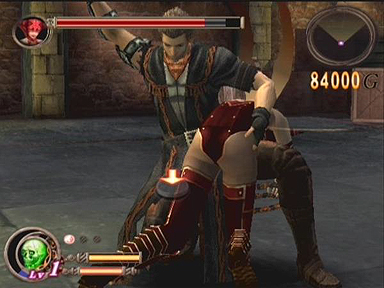
Clover Studio was only around for a few years, but they were one of the best developers of their generation. Their games were typically well-received by critics, but even Viewtiful Joe and Ōkami were only moderately successful from a sales perspective. God Hand was the last game developed by the studio and easily their most overlooked effort. A 3D action game designed specifically with hardcore gamers in mind, God Hand could be described as an over-the-top beat ’em up with ridiculous characters and a strong emphasis on comedy. The story centers around a martial artist who wields a pair of divine arms known as the “God Hands,” and the gameplay is driven around the ability to map various fighting techniques to the PS2’s face buttons in order to string together moves and create unique combo attacks. All told, there are over 100 different moves to select from (ranging from basic jabs to capoeira martial arts) and a near-limitless number of combination attacks to perform. You know a game isn’t taking itself too seriously when it lets you take opponents over your knee and spank them. The ridiculous sense of humor was lost on a lot of people, and the game received some middling reviews as a result. IGN infamously gave the game a 3/10 and complained about the game being too difficult. They also said that the game encourages button mashing, so there’s a real chance they didn’t actually play it.
6
Psychonauts
Multiplatform (2005)
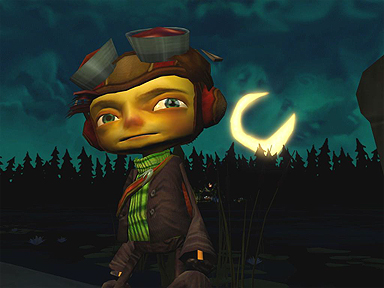
Tim Schaefer is one of the most iconic video game designers of all time. Titles like Monkey Island, Day of the Tentacle, and Grin Fandango rank among the most entertaining adventure games ever. Psychonauts features the same witty writing, strange characters, and bizarre sense of humor that you’d expect from a Tim Schaefer game. Psychonauts is a 3D platform game that’s centered around a gifted boy named Raz who has uncanny psychic abilities. Some of these abilities include telekinesis, levitation, invisibility, pyrokinesis, and clairvoyance. Raz is best defined by his ability to enter the minds of other characters. Each mind that Raz explores has its own unique visual design and challenges to overcome. Raz will encounter demons, fight his way through nightmares, and discover secret memories as he explores the paranoid minds of those around him. The ultimate goal is for Raz to locate “emotional baggage” within each mind and lock it up in mental vaults. This ultimately helps Raz understand the background of each character and resolve their mental issues. Psychonauts isn’t the longest game in the world, and the amount of items the game requires players to collect borders on the excessive. Despite its flaws, Psychonauts is one of the most imaginative platform games of all time.
5
Ninja Five-O
Game Boy Advance (2003)
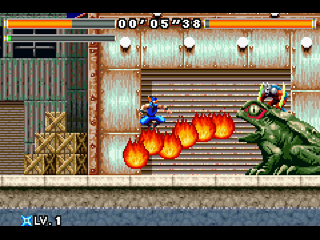
Hudson Soft’s Ninja Five-O sort of came out of nowhere and was overlooked by many gamers. This was partially because it sounded like a poorly-produced shovelware title that you’d expect to find in a bargain bin. In actuality, it was one of the best new IPs to grace the Game Boy Advance and an effective throwback to the classic action games of old. The premise of the game centers around a ninja cop who battles evil ninja masters and attempts to topple the terrorist cells that they belong to. If that doesn’t convince you that Ninja Five-O is an awesome game, then the fundamental play mechanics should do the trick. A lot of the gameplay revolves around using a katana blade and shurikens to take down endless waves of enemy fighters. It would be hard to ignore the obvious Shinobi influence. The player also has a wide variety of acrobatic moves at their disposal, and certain elements of the game are reminiscent of Strider and Ninja Gaiden. Ninja Five-O doesn’t draw inspiration exclusively from ninja-themed games, however. Comparisons to Bionic Commando can also be made, and players will often have to use a grappling hook to swing from one platform to another. Even though Ninja Five-O harkens back to classic action games, it never feels redundant or uninspired. It’s a brilliant game that never got the respect that it deserved.
4
Gotcha Force
Nintendo GameCube (2003)
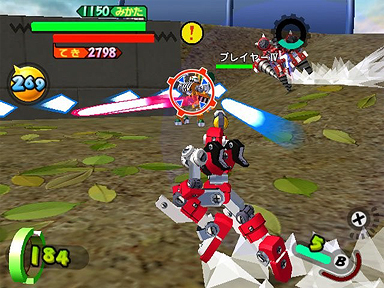
Part fighting game, part third-person shooter, the gameplay in Gotcha Force feels like a marriage between Sega’s Virtual On and Capcom’s own Power Stone series. The game revolves around the concept of collecting small toys called “Gotcha Borgs” and battling with them in small areas. Each Gotcha Borg has its own attacks and abilities, and you can create your own fighting force with over 100 unique characters. You can assemble your forces from the ground up, but the game also lets you find parts and you can even trade borgs with your friends. The game supports four players, and you can either play against your friends or work together to defeat the computer. The game was barely advertised at all and was met with mediocre reviews upon its release. Some critics lambasted the game for being tailored to children, while others suggested that you’d need to be a MENSA member to understand the game. Critics obviously didn’t get the game and consumers overlooked it altogether, but Gotcha Force has gained a cult following and fan reviews tend to be very positive. The anime art style is vibrant, the music is catchy, and the play mechanics are intuitive. Gotcha Force is pure chaotic fun.
3
Coloball 2002
Sony PlayStation 2 (2002)
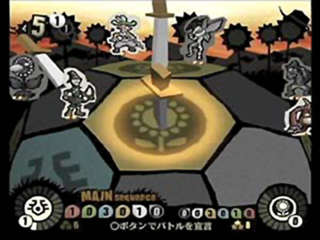
Coloball 2002 (short for “Colosseum Ball”) was released exclusively in Japan, so you can’t really fault anyone for overlooking it. There are no shortage of Japanese games that have strong followings around the world, so it’s somewhat surprising that Coloball 2002 doesn’t get a little more respect. The game is virtually unknown, and its Wikipedia article consists of three sentences at the time of this writing. Coloball 2002 was marketed as a “sports adventure” game, but it could more accurately be described as an interactive board game with RPG elements. It’s basically a head-to-head turn-based strategy game in the vein of Magic: The Gathering, although luck plays a much larger role in Coloball 2002. The game itself takes place on a giant soccer ball. Each hexagonal panel represents land, and units can be placed on each of the panel’s six corners. There are nearly 500 different units in the game, each with their own unique traits and appearance. Different strategies will be required for using (and battling against) different units, and the complexities of game can’t be properly captured in this small write-up. (Each unit has its own backstory that is typically a couple of paragraphs in length, so I can’t even adequately describe a single unit in this space!) It’s hard not to appreciate the game’s ambition attention to detail. It’s not the easiest game to get into and the language barrier makes the learning curve even steeper, but Coloball 2002 is possibly the best video game of its kind.
2
Sphinx and the Cursed Mummy
Multiplatform (2003)
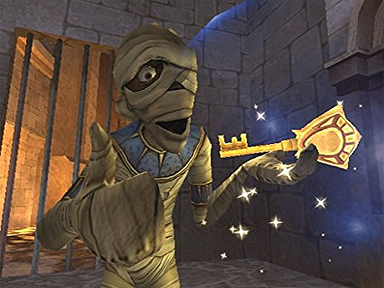
Sphinx and the Cursed Mummy is an extremely original 3D adventure game that was tragically overlooked despite being released on multiple platforms. Its basic gameplay is comparable to Tomb Raider or Prince of Persia games, but Sphinx and the Cursed Mummy adds a lot of humor to the genre. For most of the game, the player assumes the role of a demi-god named Sphinx who sets out on a quest to fulfill the ancient prophecy of Ra. However, at various points, players also have the opportunity to play as a cursed Mummy. The Mummy is an unlikely hero if ever there was one, and his sections seem to have drawn inspiration from Wario Land. While most games encourage the player to defeat enemies and avoid obstacles, the Mummy must intentionally put himself in dangerous situations in order to achieve certain objectives. For instance, if the Mummy gets caught between crushing walls, he will become paper-thin. In this form, he can fit into tight spaces or be blown around like a sheet of paper. Likewise, if the Mummy happens to be lit on fire, he will essentially act as a walking torch and can be used to burn through wooden obstacles. Sphinx and the Cursed Mummy featured unique gameplay, interesting characters, and a compelling storyline. Unfortunately, THQ could not have picked a worse time to release the game. Prince of Persia: Sands of Time, Jak II, Ratchet and Clank 2, and Beyond Good and Evil were all released within four weeks of each other in the fall of 2003, and Sphinx and the Cursed Mummy simply got lost in the crowd.
1
Metal Arms: Glitch in the System
Multiplatform (2003)
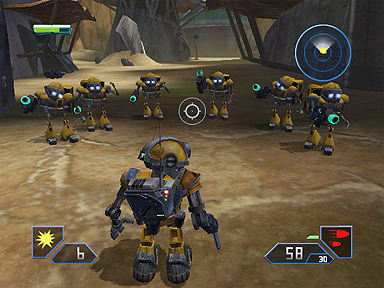
The first (and only) game developed by Swingin’ Ape Studios, Metal Arms is a third-person shooter with fast-paced action and a great sense of humor. The game focuses on an amnesiac robot named Glitch who finds himself on the frontlines in war against a tyrannical robot army. Glitch can make use of nearly 20 different weapons during his adventure. In addition to the usual array of machine guns, flamethrowers, and grenades, Glitch also uses unconventional weapons like slingshots and saw blades. The most creative weapon allows Glitch to take over the bodies of his enemies. The game has over 50 levels to play through, but destructible environments, numerous weapon upgrades, and the ability to drive multiple vehicles keeps things exciting and prevents the action from ever feeling too repetitive. The game also rewards exploration and allows players to unlock new multiplayer levels by finding hidden areas. (The concept of unlocking content by playing the game almost sounds like a foreign concept in an era where so much focus is placed on micro-transactions and DLC.) Metal Arms was released on the PlayStation 2, GameCube, and Xbox and received great reviews. It had nice visuals, a unique concept, and clever writing, but it didn’t have a lot of marketing muscle behind it and the developer was virtually unknown. The game wasn’t necessarily underrated so much as it wasn’t rated at all. Incidentally, a lot of gamers were completely unaware that the game even existed in the first place.

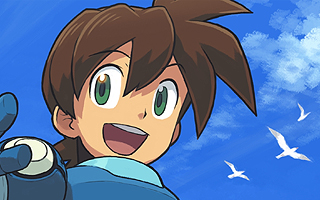
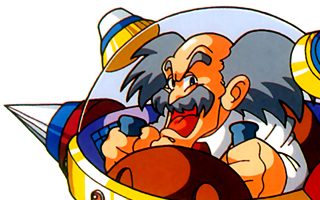
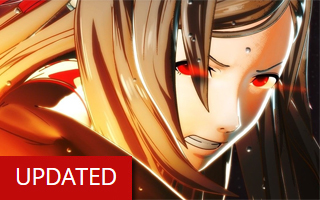
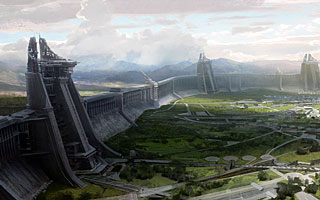
Do you agree with this list? Let us know what you think by leaving a comment below. Your opinion matters!